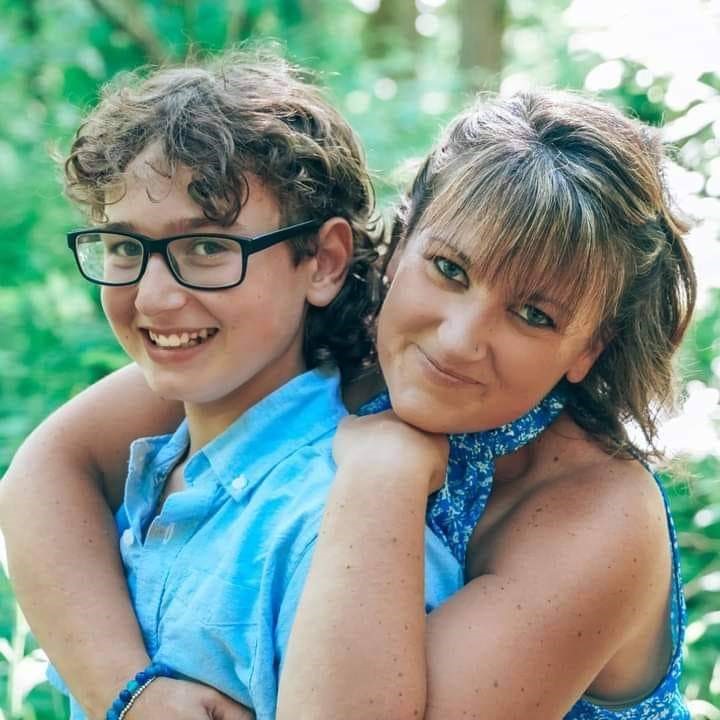This content is also available in:
Español (Spanish)
Born with autosomal dominant optic atrophy – a progressive, rare eye disease resulting in fraying optic nerves – Brysen has difficulty seeing things at a distance. Even with his glasses on, he needs to sit in the front of the classroom at school, and he’s had to ask the teacher to use only black pens on the whiteboard because he needs materials in high contrast. Even a blue marker looks white to him against the whiteboard.
One other student in his class with low vision spoke up about the blue marker, reminding the teacher that Brysen couldn’t read it. Sometimes, Brysen will do the same for his classmates because their abilities differ. And he does it for himself, too. He also has a Teacher for Students with Visually Impairments (TVI) who also lets the teacher know what Brysen needs, such as 20-point large type.
Obtaining accommodations
His mother, Krista, who serves on APH’s ConnectCenter’s Parent Advisory Board, admits that getting Brysen’s accommodations at school hasn’t always been easy. They’ve had to push for accommodations, which can be especially challenging because sometimes they’re still figuring out what will work best for Brysen.
“We realized that a standard pencil just isn’t dark enough for him to see,” Krista says. “And he still doesn’t have large-print books – the teacher in his classroom will have him take a picture and zoom in on his tablet instead. We’re still working on that.”
Brysen does use a tablet in class, set up to make the type readable. “I try to find ways to do things myself first,” he says.
Krista elaborates: “He doesn’t always go to the teacher right away,” she says, “because you don’t know what you don’t know.”

Discovering solutions that make life better – and more fun
Outside the classroom, Brysen is just as clever about finding ways to do the things he needs and wants to do. He’s discovered that dimming the lights helps when using technology because it’s easier on his eyes. He’s also starting to learn braille because he’s been having headaches and eye fatigue.
Brysen also solved the challenge of fishing, something Krista says he’d do every day if he could.
“I use a really bright bobber, so it stands out more,” he says. “And I can put a bell on my line or something to hear if there’s a fish there.”
His favorite is baseball, and he worked hard to gain the skills he needs to pitch for his team.
“We set up a pitcher’s mound and home plate in our backyard so that I can get used to it,” Brysen says. Krista adds that they measured it out so it’s the same distance as on the playing field. When he’s pitching for the team, one of his three brothers happens to be the catcher.
Plus, his coach lets Brysen catch, which is more challenging because it involves depth perception and timing. Pitching, Krista explains, is more about repetition and is visually easier.
“When I’m in the outfield, I have to rely on my hearing because I can’t see the ball,” Brysen says. “I have to hear it coming.”
Being part of a team
Over the summer, Brysen is attending orientation and mobility camps. He plans to try archery, maybe rock climbing, and other activities.
“It will be good for him to be around other children with a vision impairment,” Krista says, “so he’ll see he’s not alone.”
Fortunately, Brysen has many allies, especially in sports. As Krista says, they’ve been very lucky with coaches. For example, he plays basketball during the winter – where he discovered what it truly means to be part of a team.
“On Rare Disease Day, the entire team and their parents wore stripes to show their support, which neither of us expected,” Krista says, referring to the symbol of recognition for the day. “For Brysen, it let him know he was truly part of a team.”